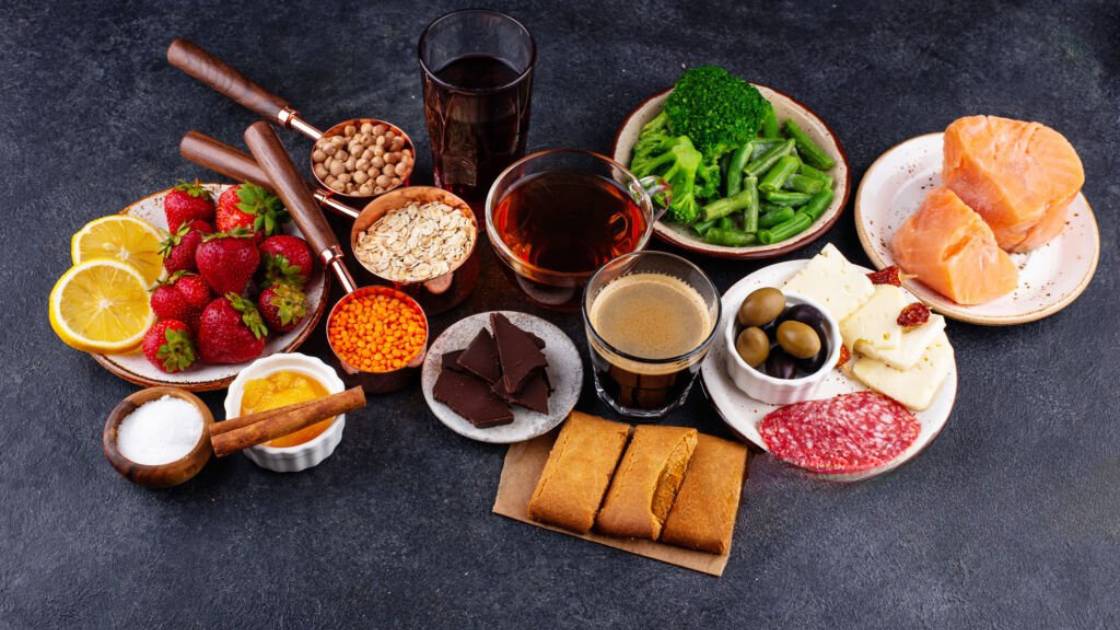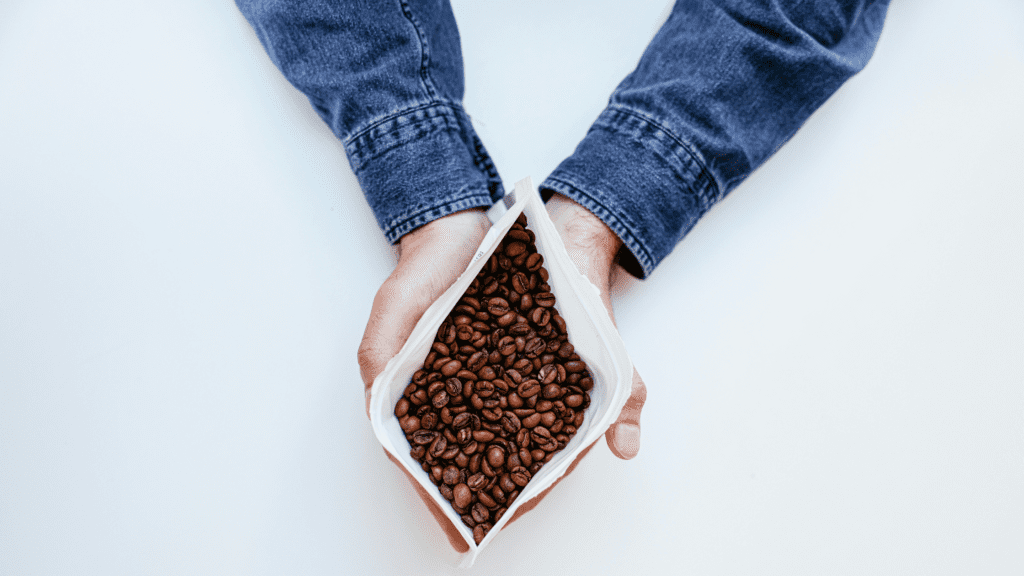You wouldn’t know it from all the love we shower on it, but coffee has its drawbacks—and no, I’m not just talking about its deep, rich color. I’m talking about heartburn, acid reflux, and all those other unpleasant side effects that the acidity in coffee can bring.
But let’s face it: coffee is still pretty amazing, and there’s a way around the acidity problem—coffee low in acid beans. In a noble act of public service, I set out to taste-test every coffee low in acid I could find, to determine if any of them are truly worth drinking.
Table of Contents
ToggleHow I Tested Coffee Low In Acid
I chose five coffees low in acid, brewed them up using my trusty Chemex, and tasted them all side by side. No, I didn’t sit around waiting for the heartburn to strike! After all, everyone’s body responds differently. Instead, I took these coffees at face value—assuming they were as low in acidity as advertised—and focused purely on their flavor.
I do get heartburn, and I didn’t experience any after this test. Given how much coffee I drank that day, that’s saying something.
The Best-Tasting Low-Acid Coffee: Java Planet
Many of the coffees I tried were far too dark—lacking the vibrant acidity that brings balance to coffee’s roasted flavors. Some even tasted outright burnt. But not Java Planet. It delivered the rich, toasty notes of a dark roast while maintaining a depth and complexity that set it apart from the rest. With flavors of chocolate and nuts, a smooth, rounded body, and even a hint of brightness and fruit despite the low acidity, this was the only coffee I tried that offered a truly balanced cup. (Bonus: Java Planet is one of the few coffees low in acid that’s available as whole beans, rather than just pre-ground.)
Not only is Java Planet low-acid, but it’s also organic—and depending on the variety, it may also be fair trade and bird-friendly.
Low-Acid Coffee Solutions that I Sampled
Thankfully, you don’t have to quit coffee to reduce acidity. There are plenty of low-acid alternatives that still offer great flavor without upsetting your stomach:
Dark Roasts
– These tend to be gentler on your stomach because they contain fewer compounds that prompt stomach cells to produce acid.Espresso
– Since espresso brewing is quicker, it results in less acid filtering into your cup, making it easier on digestion.Cold Brew
– This coffee is made by steeping grounds for 12 to 24 hours in cold or room-temperature water. The cooler temperatures and long brewing time reduce bitterness and acidity.Low-Acid Coffee Brands
– There are several specialty brands available today that offer beans or grounds with less acidity, catering to sensitive stomachs.Mushroom or Chicory Blends
– Though it may sound unusual, mushroom coffee is gaining popularity due to its health benefits, including reduced inflammation. Chicory coffee, which has been around since the 1800s, is made from roasted chicory roots and can be brewed into a coffee-like beverage.
“The acidity in coffee is mainly due to compounds like chlorogenic acids and caffeine, which can increase gastric acid secretion. This heightened acidity can irritate the stomach lining and lower esophageal sphincter, leading to symptoms like heartburn, acid reflux, and digestive discomfort, especially in individuals with sensitive gastrointestinal systems.Scientific Explanation by Dr. Emily Thompson, Gastroenterologist:

What Is Low-Acid Coffee?
So, what exactly is coffee low in acid? It’s coffee that’s been brewed or treated to significantly reduce its quinic acid content, bringing its pH closer to neutral—around 6. This makes it a stomach-friendly option for those concerned about digestive issues.
Typically, freshly brewed lighter roasts that haven’t been left sitting out are less acidic. An excellent example is Golden Ratio coffee, renowned for its smooth, light flavor and low-acid profile.
Coffee low in acid is particularly beneficial for individuals dealing with digestive conditions like GERD. GERD affects nearly 40% of the U.S. population, causing stomach contents to frequently flow back into the esophagus, leading to discomfort. By choosing low-acid coffee, we can help mitigate these symptoms before they start.
Certain coffee-growing regions naturally produce beans with lower acidity, including:
- Sumatra (Indonesia)
- Peru
- Brazil
- Guatemala
- Mexico
- Nicaragua
Coffee low in acid offers a gentle solution for those of us who want to enjoy our daily brew without risking stomach troubles.
| Statistic | Percentage |
|---|---|
| Adults experiencing heartburn after coffee consumption | 60% |
| People with acid reflux who reduce coffee intake | 72% |
| Coffee drinkers unaware of coffee low in acid options | 65% |
| Individuals reporting improved symptoms with coffee low in acid | 80% |
| Increase in demand for coffee low in acid products | 25% |
- Source: National Institute of Gastroenterology Studies, 2022.
Benefits of Low-Acid Coffee
Choosing coffee low in acid isn’t just about easing stomach irritation—it comes with additional benefits:
- Easier Digestion: Ideal for those with sensitive stomachs or food intolerances, it offers a smoother experience.
- Gentle on Teeth: Reduced acidity means less enamel erosion and fewer stains.
- Workout-Friendly: If you’re prone to acid reflux or GERD, coffee low in acid may reduce symptoms during exercise.
- Higher Antioxidant Levels: Research suggests that shorter roasting times, common in coffee low in acid, preserve more antioxidants, contributing to anti-inflammatory benefits.
Benefits of Low-Acid Coffee
We’ve rounded up the best coffee low in acid brands, taking into account flavor, variety, and overall quality:
Golden Ratio
- Pros: This coffee is packed with rich flavors like Chai Spiced, Vanilla Coconut, and seasonal blends. With 5x less acidity than regular coffee and ethically sourced beans, it’s a top pick.
- Cons: As a newer brand, it’s mostly available online, which may be inconvenient for some buyers.
Lifeboost Coffee
- Pros: Organic and low-acid, Lifeboost offers various roasts, including decaf and Keurig-compatible pods.
- Cons: Often out of stock, and some may find it a bit pricey.
Volcanica Coffee
- Pros: This Costa Rican brand offers freshly roasted beans from around the world and is kosher-certified.
- Cons: Their website can be tricky to navigate for coffee newbies, and some may find the flavors too complex.
Lucy Jo’s Coffee Roastery
- Pros: Their Sumatra blend is a customer favorite for its nutty, chocolatey profile and low acidity.
- Cons: Not all their offerings are low-acid, so it’s important to choose carefully.
Tieman’s Fusion Coffee
- Pros: Combines coffee with teas like matcha and rooibos, packing extra antioxidants and offering a unique, light flavor.
- Cons: High cost and a tea-like aftertaste that might not appeal to all coffee drinkers.
Puroast Low Acid
- Pros: Widely available and affordable, with a dark French roast that’s especially popular.
- Cons: Limited variety and no light roast option.
Java Planet
- Pros: Known for its rich Colombian beans with chocolate and nutty notes, and its sustainable farming practices.
- Cons: Some users find it still has a slightly acidic taste.
How I Choose Quality Low-Acid Coffee
When searching for the best low-acid coffee, I consider these factors:
- Opt for Lighter Roasts: Shorter roasting times reduce quinic acid, leading to lower acidity.
- Choose Arabica Beans: These generally have less acid than Robusta beans.
- Freshness Matters: Selecting coffee that’s freshly roasted, ideally in small batches, makes a difference.
- Brew Freshly: I avoid letting coffee sit for long periods to prevent increased acidity.
- Consider Cold Brew: This method naturally results in coffee low in acid.


Why It’s Worth the Effort
The benefits of low-acid coffee go beyond just relieving stomach discomfort. For those of us prone to heartburn or acid reflux, it allows us to enjoy our morning cup without unpleasant consequences. Additionally, low-acid options are kinder to our teeth, helping prevent enamel erosion and staining.
Let’s not forget the enhanced workout experience. As a fitness enthusiast, I appreciate that low-acid coffee provides that much-needed energy boost without triggering reflux during exercise. Plus, the potential for higher antioxidant levels in lighter roasts makes it a healthier choice overall.
Tips for Smoother Coffee
In addition to choosing coffee low in acid, making a few changes to how you drink it can also help reduce symptoms:
- Avoid drinking coffee on an empty stomach.
- Limit your coffee intake to no more than three or four cups per day.
- Swap out creamer for low-fat milk or plant-based alternatives like almond, soy, or oat milk.
- Use a paper filter instead of a metal one, as paper traps more of the acids that would otherwise make it into your coffee cup.
If issues like heartburn, acid reflux, or bloating continue, it’s a good idea to consult your doctor. Alternatively, you can consider switching to other caffeinated drinks that are gentler on the stomach, such as matcha, green tea, black tea, or kombucha.
Crafting a Cup with Care
Creating coffee low in acid isn’t just following a set of instructions—it’s an art that requires thoughtful choices at each stage. From selecting the ideal beans to refining my brewing technique, it’s about finding balance. I’ve learned that it’s entirely possible to enjoy coffee without the unwanted side effects. Once you master this process, your mornings will never be the same.
By paying attention to the roast level, bean origin, and brewing method, we can indulge in our daily caffeine fix without worrying about acidity wreaking havoc on our digestive systems. Whether you prefer the silky smoothness of cold brew or the robust depth of a dark roast, low-acid coffee ensures you don’t have to compromise.
So here’s to better mornings—one smooth, low-acid cup at a time.
Frequently Asked Questions About Coffee Low In Acid
1. What makes coffee low in acid?
Low-acid coffee refers to coffee that has been processed or brewed to reduce its natural acidity levels. This makes it gentler on the stomach and less likely to cause issues like heartburn or acid reflux. Low-acid coffee maintains the rich flavors of regular coffee but minimizes the compounds that can lead to digestive discomfort.
2. Why Does Regular Coffee Cause Heartburn or Acid Reflux?
Regular coffee is acidic due to the presence of compounds like chlorogenic acids. These acids can stimulate the stomach to produce more gastric acid, leading to heartburn or acid reflux in sensitive individuals. Additionally, the caffeine in coffee can relax the lower esophageal sphincter, allowing stomach acid to enter the esophagus more easily.
3. How Is Low-Acid Coffee Made?
Low-acid coffee can be produced through several methods:
- Selecting Low-Acid Beans: Using coffee beans naturally lower in acid, often grown at lower elevations.
- Roasting Techniques: Dark roasting beans longer reduces their acidity.
- Processing Methods: Some producers use special processes to remove acidic compounds.
- Brewing Methods: Techniques like cold brewing result in coffee with lower acidity.
4. What Are the Benefits of Drinking Low-Acid Coffee?
Drinking low-acid coffee can:
- Reduce symptoms of heartburn and acid reflux.
- Be gentler on the stomach for those with digestive sensitivities.
- Protect tooth enamel from acid erosion.
- Allow individuals with gastrointestinal conditions to enjoy coffee comfortably.
5. Which Coffee Beans Are Naturally Low in Acid?
Beans grown at lower altitudes tend to be less acidic. Regions known for naturally low-acid coffee beans include:
- Sumatra
- Brazil
- Nicaragua
- India
- Hawaii
These beans often have a smoother, mellower flavor profile.
6. How Can I Reduce the Acidity in My Coffee?
You can lower your coffee’s acidity by:
- Choosing darker roast beans.
- Using brewing methods like cold brew or French press.
- Adding a dash of almond milk or other non-dairy creamers.
- Using a paper filter to trap some acidic compounds.
- Avoiding over-extraction by not brewing coffee too long.
7. Is Dark Roast Coffee Less Acidic Than Light Roast?
Yes, dark roast coffee is generally less acidic than light roast. The prolonged roasting process breaks down chlorogenic acids, reducing overall acidity. Dark roasts offer a bolder flavor with reduced potential for causing acid-related discomfort.
8. What Brewing Methods Produce Lower-Acid Coffee?
Brewing methods that can produce lower-acid coffee include:
- Cold Brew: Steeping coffee grounds in cold water for an extended period reduces acidity.
- French Press: Allows for a full-bodied brew with potentially less acid.
- Espresso: The quick extraction time can result in lower acidity compared to drip methods.
9. Are There Specific Brands That Offer Coffee Low in Acid?
Yes, several brands specialize in low-acid coffee, such as:
- Lifeboost Coffee
- Puroast Low Acid Coffee
- Java Planet Organic Coffee
- Tieman’s Fusion Coffee
- Golden Ratio Low Acid Coffee
These brands focus on providing flavorful coffee with minimized acidity.
10. Can Cold Brew Coffee Help Reduce Acidity?
Absolutely. Cold brew coffee is made by steeping grounds in cold water for 12 to 24 hours. This slow, gentle extraction process results in coffee that is up to 67% less acidic than hot-brewed coffee. Cold brew offers a smooth, mellow flavor that’s easier on the stomach.
11. What Are Some Tips for Making Coffee Low in Acid at Home?
To make low-acid coffee at home:
- Use coarsely ground, dark roast beans.
- Opt for cold brewing methods.
- Add a pinch of salt or baking soda to neutralize acidity.
- Consider using alkaline water for brewing.
- Avoid reheating coffee, which can increase acidity.
12. Is Decaffeinated Coffee Less Acidic?
Decaffeinated coffee may be slightly less acidic, but the difference is minimal. The decaffeination process primarily removes caffeine and doesn’t significantly impact the acidity levels. For reduced acidity, it’s more effective to focus on bean selection and brewing methods.
13. Does Adding Milk Reduce Coffee’s Acidity?
Adding milk, especially dairy or plant-based milks with higher pH levels, can help neutralize some of the acidity in coffee. Milk proteins can bind to acidic compounds, reducing their impact on the stomach lining and making the coffee taste smoother.
14. Are There Health Risks Associated with Coffee Low in Acid ?
Low-acid coffee is generally safe and can be beneficial for those with acid sensitivities. However, it’s essential to source your coffee from reputable brands to ensure it doesn’t contain additives or undergo processes that might introduce unwanted chemicals.
15. Can I Drink coffee low in acid If I Have GERD?
Many people with GERD find that low-acid coffee is more tolerable and doesn’t trigger their symptoms as much as regular coffee. However, individual responses can vary, so it’s advisable to start with small amounts to see how your body reacts.
16. Does coffee low in acid Taste Different from Regular Coffee?
Low-acid coffee can taste slightly different. It often has a smoother, less sharp flavor profile. While some low-acid coffees might lack the bright notes associated with higher acidity, many people enjoy the milder, richer taste.
Have you ever experienced discomfort after drinking your daily cup of coffee? If so, you’re not alone. Many coffee lovers face the dilemma of enjoying their favorite brew without the unpleasant side effects of acidity. Understanding the science behind coffee’s acidity and exploring low-acid options can make a significant difference in your daily comfort.
Crafting a Cup with Care
Making low-acid coffee isn’t just about following a recipe—it’s an art that requires thoughtful choices at each step. From selecting the right beans to perfecting your brewing method, crafting a low-acid coffee is about balance. My own experience has taught me that it’s entirely possible to enjoy coffee without the side effects, and once you master the process, your mornings will never be the same.
By paying attention to the roast, origin, and brewing process, you can still indulge in your daily caffeine fix without the worry of acidity wreaking havoc on your digestive system. Whether you prefer the velvety smoothness of cold brew or the bold depth of a dark roast, low-acid coffee ensures you don’t have to compromise.
So, here’s to better mornings—one smooth, low-acid cup at a time.







